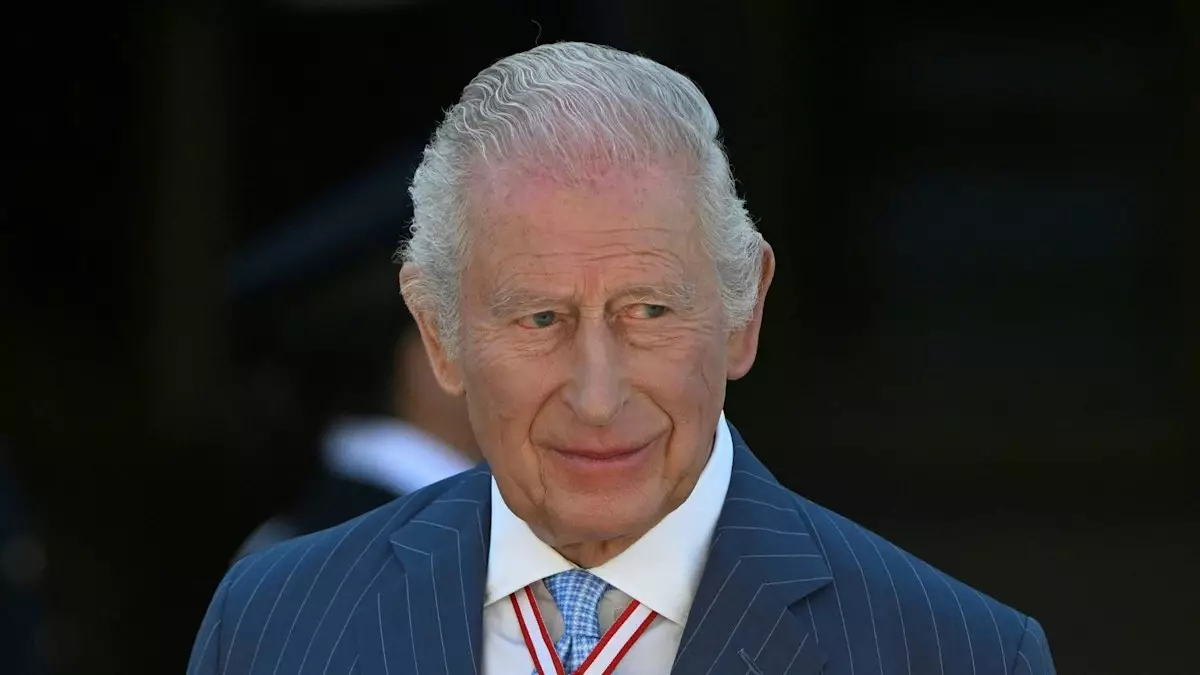On a bright Sunday morning, King Charles III radiated joy as he made his way to St Mary Magdalene Church in Sandringham. The 76-year-old monarch, a figure embodying tradition and continuity, was spotted smiling and waving to fans from the backseat of a blue car, capturing the affection of onlookers. This warm exchange seemed to reaffirm his commitment to connecting with the public, a feature often touted as essential to modern monarchy. Yet, in an unusual twist, this particular outing was marked by the noticeable absence of Queen Camilla, a comforting presence usually by his side. The implications of her absence invite contemplation about the pressures faced by contemporary royals and the balance of public duties with personal well-being.
The Majesty of a King
Dressed in a dark grey suit complemented by a crisp white shirt and tie, King Charles exuded an air of dignity and poise, embodying the essence of British royalty. The sight of a smiling king, actively engaging with his subjects, was uplifting—a refreshing reminder of the monarchy’s role in fostering a sense of community. However, it’s essential to scrutinize this image through a critical lens. Is this a mere façade, a polished representation that hides the complexities and burdens of royal life? The reality is that while the king’s public engagements may seem effortless, they are likely a culmination of meticulous planning and deep-seated duty.
An Exhausting Schedule
The royal couple has recently returned from a rigorous two-day itinerary in Canada, engaging in numerous activities, including the state opening of Parliament, where Charles delivered a heartfelt 26-minute speech. The effort put into their engagements contrasted sharply with the relative tranquility of Sandringham, underscoring the intense demands placed on royals in today’s fast-paced world. Reports suggest that the Queen may have opted for rest, especially with a busy summer calendar on the horizon, featuring events like Trooping the Colour and Royal Ascot. This begs the question: Is the relentless pace of royal life sustainable, particularly in light of the ongoing health challenges faced by the King?
The Royal Health Dilemma
A senior royal aide shed light on a pressing concern: King Charles is reportedly managing his cancer while continuing to fulfill his royal obligations. This revelation is profound, as it not only sheds light on the king’s personal struggles but also highlights the broader issues of health and lifestyle for public figures. The notion that he wishes to maintain a sense of normalcy in his daily life amid ongoing treatment speaks volumes about his resilience, yet it also raises concerns about the potential toll such demands may take on his physical and emotional well-being.
Reconnecting with Relations
The recent trip to Canada served not only as a royal engagement but as a significant effort to reconnect with realms that hold historical and emotional significance for the monarchy. The affectionate reception denoted a yearning for continuity, as Charles himself articulated—a heartfelt desire to strengthen ties with a nation and its people. Yet, are such efforts sufficient in today’s world, where public expectations evolve rapidly? The warmth of the royal response could be a reflection of an underlying desire for connection in a time of increasing disconnection in society.
Beyond Public Duties
Charles’s dedication to his role and his kingdom cannot be overstated. However, it is crucial to reflect on the cost of this dedication—not only to himself but also to those around him. The balance between a king’s duties and personal health is precariously delicate; understanding the human side of the monarchy is vital. Royals are not just representatives of tradition but also individuals with personal challenges and vulnerabilities. In this modern era, it is not just their regal status that fascinates the public, but the authenticity of their experiences that resonates deeply.
Through the lens of recent events, it’s evident that King Charles III’s interactions and undertakings reveal much about the complexities of modern monarchy, health, and the undeniable human need for connection. As he navigates his role filled with the expectations and stresses of royalty, the greater narrative unfolds—one that is as much about the King himself as it is about the very nature of monarchy in a contemporary context.

